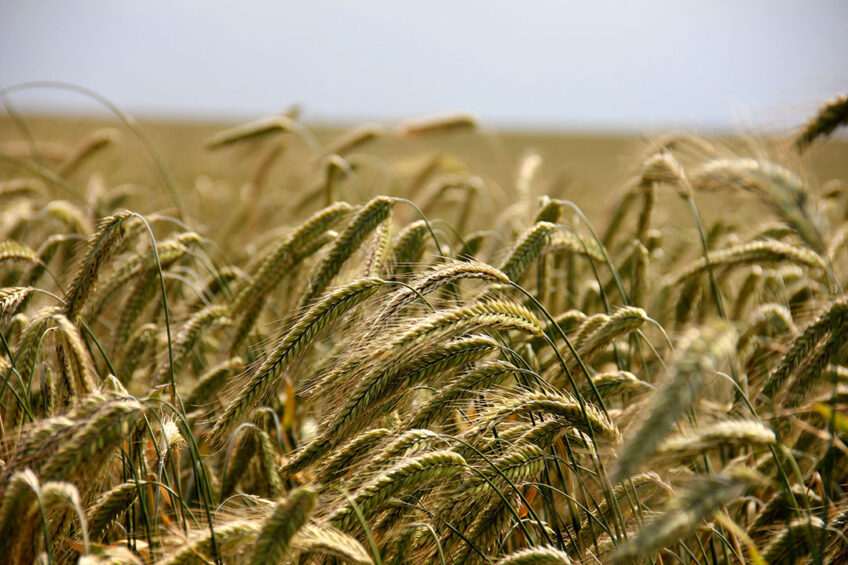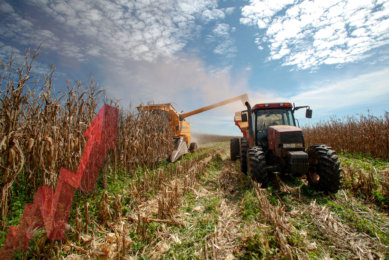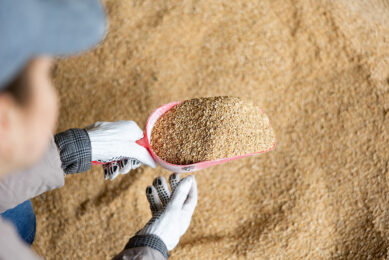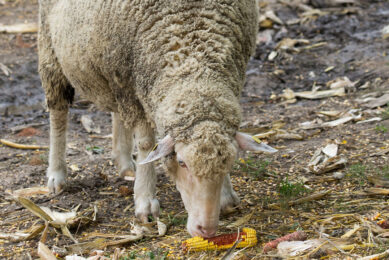What’s holding up the inclusion of more rye in livestock feed?

A look at US, Canadian and European studies, new hybrids, enzymes and more.
Rye has gained attention in feed circles in the USA and beyond in recent years for several reasons. It grows in colder climates in the USA, Canada and northern Europe, it’s nutritious and winter rye planted as a cover crop can be baled as forage (‘ryelage’). It has attracted scientists to research it as a feed in cattle, pig and poultry diets, getting positive results on a variety of fronts with the ‘newish’ European hybrids.
For example, US scientists, led by Dr Steph Herbstritt at the Clean Air Task Force, have published a paper concluding that forage quality indicators such as crude protein, available protein and net energy for gain are improved in rye with the addition of fertiliser.
Up until the last few years, rye had been used sparingly as a feed or avoided as it was prone to fungus such as ergot and also contains more anti-nutritional factors than wheat and barley – soluble non-starch polysaccharides that lower the digestibility of nutrients by deterring enzyme access.
However, new hybrids from Germany, Poland and Ukraine have much less non-starch polysaccharides and also have much-improved palatability.
Rye in poultry diets
Let’s look at poultry first, which are more sensitive to anti-nutritional factors than pigs or cattle.
In 2023, a team of scientists in Germany published a study looking at replacing whole wheat in turkey diets with rye. They note that at this point, “rye is one of the most important cereal crops in Central Europe, thus attempts have been made to include it in the diets of birds to reduce production costs. As it is affordable, simple to cultivate, and has lower soil and agro-technical needs than other cereals, rye is crucial to sustainable agriculture.”
They used a hybrid with about 9% protein, high levels of starch (54%) and moderate energy (10 MJ NE/kg). The trials involved 4 groups of about 4,300 turkeys in total.
- commercial starter diets were given up to 35 days,
- the control group received 5% or 10% wheat until the end of the fattening period and
- the other groups were given increasing levels of rye up to 10%.
The team found that supplementation with rye led to no significant differences in the final body weight, and that “including proportions of rye up to 10% could replace conventional ingredients.”
Rye in pig diets
Also in 2023, Polish scientists compared barley, triticale and rye in pig growth performance and meat quality and found cholesterol in various tissues was the lowest in pigs fed with the rye diet. The meat of these pigs was also characterised as being juicier (better water-holding capacity). Higher fat saturation was found in the meat as well, which means better resistance to oxidation during storage can be expected (a longer shelf life). The team concluded therefore that supplementing pig diets with rye “may be better for the production of traditional or long-matured meat products.”
Other scientists in Alberta, Canada a few years ago found that fall-planted European hybrids of rye “can completely replace wheat grain in grower-finisher pig diets without affecting feed efficiency, feed cost per pig or feed cost per kilogram body weight gain.”
Commercial trail
However, team member Dr Jose Landero, Swine Nutritionist at Gowans Feed Consulting in Alberta, explains that the commercial trial he and his colleagues conducted at the Drumloche research facility showed that including high level of hybrid rye as a replacement for wheat in diets formulated for equal net energy and digestible amino acids doesn’t affect feed efficiency but reduces feed intake and growth rate in pigs.
”So, we need to be careful on including rye in the diet,” he says. “When available and cost-effective, clean hybrid rye without ergot has been included at conservative levels up to 30% in diets for grower-finisher pigs. Inclusion of the non-starch polysaccharide enzyme is advised to improve feed efficiency and growth rate.”
Ergot in rye
Looking forward, Landero explains that some Canadian pig farmers are still hesitant to feed rye to pigs due to bad past experiences with ergot.
“Hybrid rye is more resistant to ergot, lowering the chance for ergot contamination but it’s important to take samples of each load received at the mill and inspect each load visually for ergot bodies,” he says. “If the increase in rye production observed over the last few years in Western Canada is sustained, there is potential for more pig farmers to allow nutritionists to include rye in diets to pigs, as trials have showed that rye can replace part of the wheat, barley and maize in the diet without affecting performance.”
Landero reports that there are published papers evaluating hybrid rye for pigs which conclude that rye can be fed to gestating sows, lactating sows, nursery and grower-finisher pigs, but in his view, more studies need to be conducted under commercial conditions. There’s a particular need for commercial-scale trials feeding hybrid rye to nursery and gestating/lactating sows.
Trial: Rye vs Maize
A recent article in Canadian Hog Journal reports that based on studies at the University of Illinois and South Dakota State University, swine farmers at the Upland Hutterite Colony in South Dakota did their own rye trial. About a year ago, they started feeding hybrid rye at 20% of total ration for gestating and lactating sows, and found it as good as or better than maize in terms of feed intake and other performance targets.
Growing rye
In Western Canada, rye acreage is on the uptake with more of the crop now available for swine feeding, says Landero – largely because of the new European hybrids.
“According to Statistics Canada, rye production increased from an average of 249,000 tonnes per year in 2010-2015 to 367,000 tonnes in 2016-2020,” he says. “Data from the Canadian Grain Commission showed that by 2021-2022, around 50% of the acres seeded with rye were hybrid rye, 8 to 14% were not specified and the rest were non-hybrid.”
He adds that although hybrid rye can fit well in crop rotation for livestock producers who grow their own grain, the main concern is still susceptibility to ergot. The other concern raised by grain farmers is being able to seed in the fall when harvesting.
Reduce nitrate losses
Rob Malone, a US Department of Agriculture-Agricultural Research Service engineer, has been involved in rye studies and agrees it can be difficult for crop farmers to find time to plant rye or other cover crops in the fall with all the other tasks at that time. However, more and more US crop farmers are trying rye to gain the benefits, whether they farm livestock or not. Malone and colleagues recently published results of field-scale computer modelling that simulates rotations of maize and soybean, with or without winter rye cover crops, at 40 sites across the North Central USA. They found that planting winter rye between rotations of corn and soybean can effectively reduce nitrate losses and sequester carbon, among other benefits.
Cereal Rye – profits and other benefits
He adds that “in the spring, you either have to harvest it or kill it with herbicide, but evidence has been mounting around the profits and other benefits that can be achieved when farmers are grazing (where there’s a longer harvest window) or baling (or harvesting and storing it, called ensiling) for cattle feed.”
This has been encouraged in several states through university extension personnel. For example, Ohio State University: Cereal Rye – A Cover Crop with Feed Value?, Penn State: Dairy Sense: Small Grain Silage for the Lactating Herd and University of Wisconsin-Madison: Feeding Rye or Triticale to Dairy Cattle and Fall Forage Rye for Dairy Heifers and Dry Cows.











